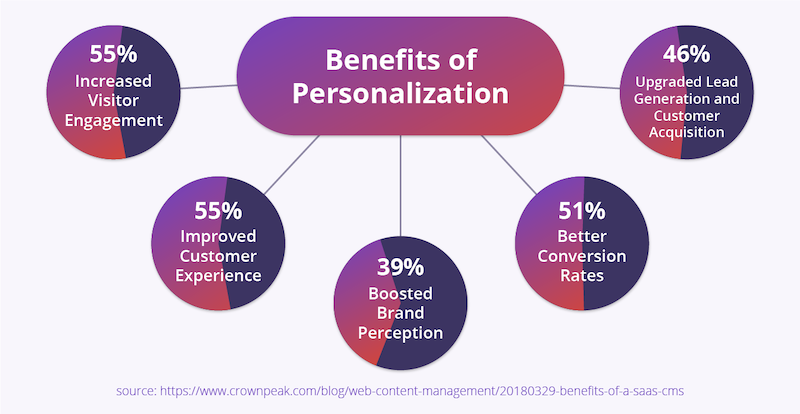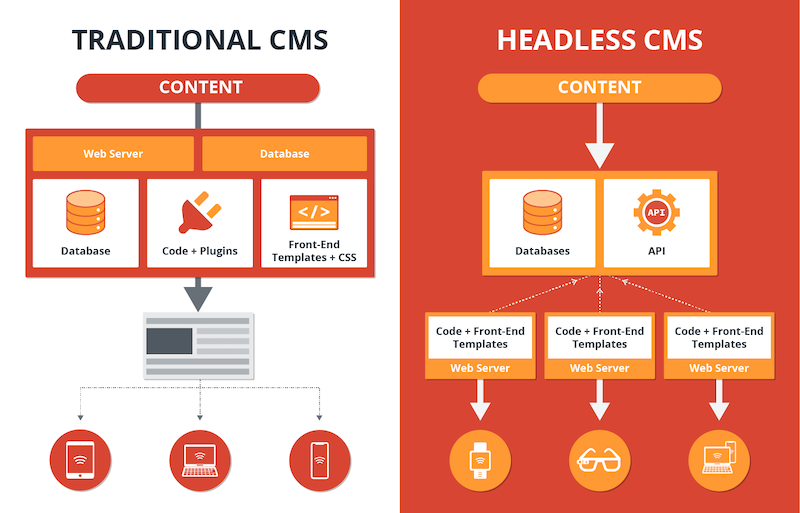Welcome—or welcome back!—to Contentstack’s three-part series on CMS debt. In this series, we’re breaking down all the ways that doing business with the wrong CMS can have a detrimental impact on your success.
In this installment, we’re going to examine the opportunities that companies miss out on when they’re stuck with an outdated or rigid traditional CMS that limits their ability to take advantage of new opportunities and compete in a quickly-evolving market.
5 Signs Your CMS is Costing You Big Business Opportunities
“Opportunity cost” is the phrase used to represent the benefits that are lost when a business chooses to integrate technology that doesn’t end up meeting their unique needs.
Because it isn’t a cost that’s immediately tied to money, opportunity cost isn’t accounted for in financial reports. However, that doesn’t mean it isn’t very real and that plenty of businesses are struggling under its strain.
As the heart of the customer experience, content is one of your most important business assets. And as the “hub” that ties all of these assets together, your content management system (CMS) plays a vital role in determining which opportunities you will and won’t be able to pursue.
Keep reading to learn about the signs you should look out for to determine whether your CMS is empowering or limiting your business success—and what to do if it’s the latter.
It’s Near Impossible to Keep Up to Date
Like plenty of other software platforms, traditional, monolithic CMSes (yes, there are several types of CMS—which we’ll get to soon!) are often purpose-built and can be cumbersome to change.
This is unfortunate because the businesses that use them must change.
Whether you need to make a branding update, add new pages, expand a product line, or implement a full facelift courtesy of a merger—the CMS upon which your website is built should be agile enough to make these changes easily.
If difficulty making these and other relatively simple changes is holding you back from taking advantage of partnerships and cutting-edge campaigns, it’s time for a CMS upgrade.
IT Has to Get Involved in Every Little Thing
Modern CMS tools empower marketers to manage their content without technical intervention.
Not-so-modern CMS tools force marketers to rely on IT any time they need to make any little content update.
The result is costly downtime, (understandable) frustration for both parties, and the inability to move with agility even when an exciting new opportunity arises.

Your Security Alarms are Constantly Going Off
If your IT team is spending more time maintaining than innovating, your business has already suffered from a cyberattack, or your CMS vendor is no longer supporting the software you’re using—updating your CMS needs to become your top priority before your system goes down or gets taken down.
There’s nothing like going offline unexpectedly to force you to miss out on new opportunities and get dropped from existing ones!
You’re Using Multiple Tools to Manage Your Content
Are your essential content assets scattered among several platforms?
How many tools are you using to get your content created, optimized, designed, and distributed to all the right channels?
How many tools do you wish you were using instead?
Your CMS platform should serve as a single source of truth from which to manage all your content assets from creation through distribution and effectively wield them to take advantage of new business opportunities.
There’s No Functionality for Personalization or Distributing Across Channels
Speaking of effectively using content assets—are you able to deliver relevant content that speaks to various audiences on each of their preferred channels?
If you didn’t even know that was possible, chances are you’re using a monolithic CMS that isn’t equipped to help you meet modern consumer demands.
By 2030—which is alarmingly soon in business years—each person is expected to use as many as 15 different internet-enabled devices every day. And, these omniplatform and omnichannel consumers expect to experience relevant content everywhere.
Even today, nearly 80 percent of consumers only engage with brands that provide personalized offers. On the upside, 78 percent of shoppers do say relevant content makes them more likely to complete a purchase!
If you continue to work with a CMS that doesn’t empower you to create and distribute relevant content everywhere your audience is, the cost of missed opportunities is going to become astronomical in the coming years.

So, did any of those signs seem familiar to you? If so, and if you don’t make an effort to move on to a better CMS soon, your outdated tech is going to “help” you rack up astronomical costs in missed opportunities.
The Opportunity Cost of Sticking With the Wrong CMS
While the cost of lost opportunities might not be as obvious or easy to track as traditional financial expenditures, there’s no doubt that it can harm your business.
These are some of the opportunities that your legacy CMS could be causing you to miss out on:
- The opportunity to create, optimize, and distribute omnichannel experiences that speak to a whole new generation of consumers
- The opportunity to deliver the personalization that consumers crave
- The opportunity to develop a productive workplace culture that attracts and retains top talent
- The opportunity to beat your competitors to market, win a significant share, and establish yourself as a leader in your industry
- The opportunity to save a ton on salary dollars and prevent fines when it comes to CMS security and maintenance
- The opportunity to develop a reputation as a “first-mover” by deploying your apps and content on emerging platforms
What are “pacesetters” doing to take back these opportunities? They’re ditching their monolithic content management platforms for headless CMS.
Adopt Headless CMS to Save on Opportunity Costs
While replacing your CMS certainly comes with its costs—so do missed opportunities.
With the former, if you do it right, you pay for it once, and it’s over. With the latter, you keep losing money on those missed opportunities every single day you choose to ignore your aging technology.
If you’re ready to save some money on maintenance and make money from new audiences and opportunities, here’s what you need to know.
Traditional, monolithic CMSes (think WordPress and Squarespace) were the original content management and delivery tools. They use an all-in-one, or “coupled,” system with a singular codebase that pulls in everything needed to manage and publish content to a website.
But when digital experiences developed beyond websites to multiple channels and devices, new technology was created to keep up: the headless CMS.
A headless CMS “decouples” all the technology that goes into managing content. Instead, all the tools it takes to create, store, optimize, and distribute content are held together using application programming interfaces (APIs). This modular architecture allows for the content to be created once then re-optimized and re-distributed in the way that’s most relevant to the channel and audience.
(For a more comprehensive look at the different types of CMS, download a free copy of the Ultimate Guide to CMS Vol. 2: Content Management Systems Pros and Cons here.)

Contentstack’s headless CMS is uniquely positioned to help your company overcome all five signs of missed business opportunities: It’s user-friendly enough for anyone to keep up-to-date, we strive to ensure that marketing folks can perform all their important content tasks free from IT intervention, our security authentications are enterprise-grade, our stream-lined features empower you to keep all your content assets safe on one platform, and our Experience Extensions enable you to take advantage of best-in-class integrations including CRM platforms, localization services, AI tools, A/B testing applications, personalization engines, and more.
Avoid the astronomical opportunity cost of working with the wrong CMS altogether with our tips on selecting the right CMS—or jump right in and see the right CMS at work when you take Contentstack for a test drive today.
